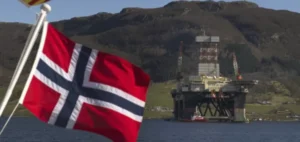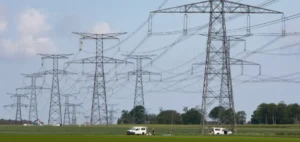The EU’s largest ships are now subject to new rules on greenhouse gas emissions. MEPs and member states agreed on a deal last Thursday to require ships over 5,000 tons to switch to sustainable fuels, such as hydrogen, and reduce their carbon emissions by 80 percent by 2050 compared to 2020. This decision follows a first initiative taken in November 2022, in which the EU decided to progressively integrate maritime transport into its carbon market.
The modalities of this decarbonization of the maritime sector have now been defined, with clear objectives for reducing the greenhouse gas intensity of maritime fuels. Emissions from the largest ships will have to be reduced by 2% in 2025 compared to 2020, then by 14.5% in 2035 and by 31% in 2040. This requirement applies to ships of at least 5,000 tons, which are mainly fuelled by heavy fuel oil and are responsible for 90% of the sector’s CO2 emissions. The possible inclusion of smaller vessels will however be studied “by 2028”.
The use of “renewable fuels of non-biological origin” (RFNBO), such as sustainable synthetic fuels like green hydrogen, will be strongly encouraged. To achieve these goals, the share of RFNBOs will have to rise to 2% from 2024 onwards, a provision that raises concerns about their still very limited availability. Shipowners who use them will be able to benefit from additional credits to offset their emissions until 2035.
Finally, the text obliges container ships and cruise ships to use shore-side power when docked “in the main ports” of the EU, from 2030, to limit air pollution. This obligation will be extended after 2035 to all European ports, if they are equipped. This measure will significantly reduce pollution in port areas.
This decision represents a real revolution in the maritime sector, creating long-term predictable rules to facilitate investment by companies and ports. It will also oblige other regions of the world to act to reduce their greenhouse gas emissions.
According to Jörgen Warborn, rapporteur for the text and member of the European People’s Party, the rules defined will allow companies and ports to invest with confidence in the long term. He also noted that these measures would encourage other regions of the world to take similar action to combat greenhouse gas emissions. For his part, MEP Pierre Karleskind, member of Renew Europe, welcomed the recognition of sail propulsion as an effective technology to decarbonize the maritime sector. Indeed, the installation of sails will now be rewarded in the calculation of the carbon intensity of a ship.
However, the environmental NGO Transport&Environment has given a moderate welcome to this progress. Although she considers that the agreement marks “the beginning of the end for dirty oil ships”, she deplores gaps in the text that could allow the use of biofuels or low-carbon fuels that are also harmful to the climate to continue. It is therefore necessary to continue working to eliminate these sources of pollution.
In summary, the agreement on decarbonization of the maritime sector is a major step forward in the fight against climate change and greenhouse gas emissions. Long-term predictable rules will allow companies and ports to invest with confidence, while recognition of sail propulsion will encourage the adoption of clean technologies. However, it is important to continue to work to eliminate all sources of pollution and achieve the ambitious climate goals.






















